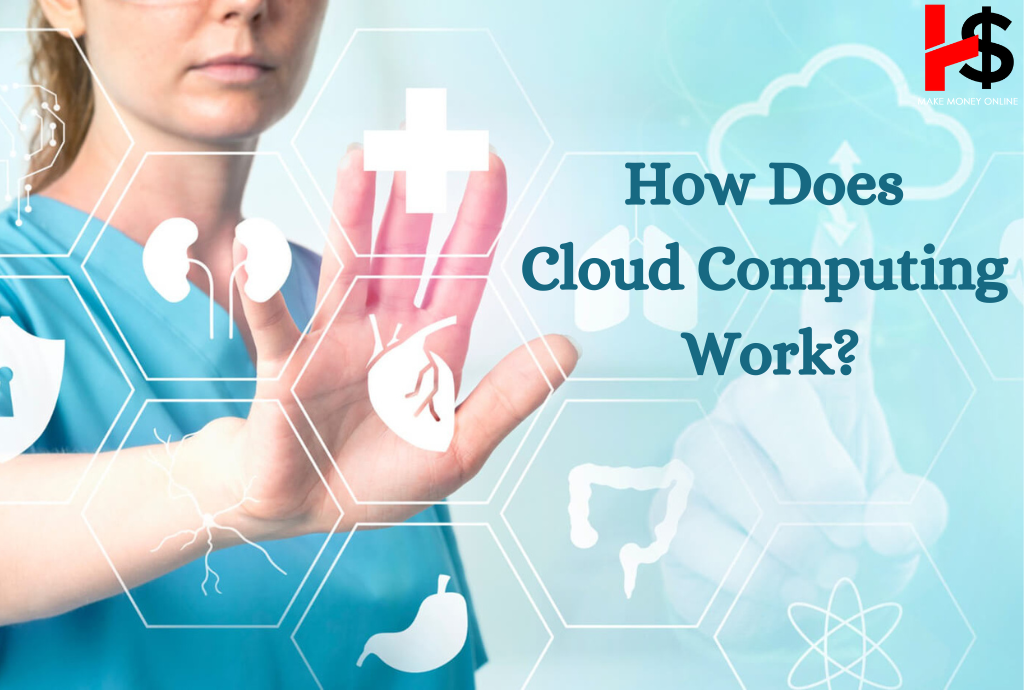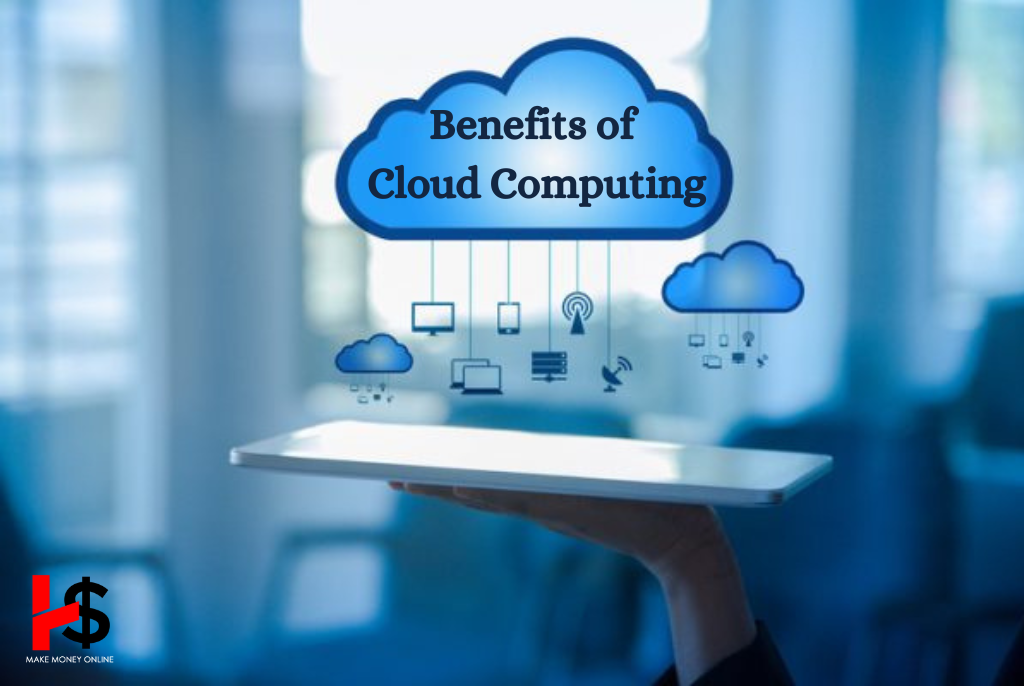One of the key technologies influencing our daily lives, both at work and play, is cloud computing. It helps businesses fix computer issues, improving operations and maintaining security. Small enterprises, in particular, have the chance to take use of cutting-edge computer technology at a reduced cost. Examine the benefits that the cloud offers your company and the reasons why it is important.
The cloud computing model speeds up income generation by enabling organizations to expand innovative digital solutions more quickly. Developers utilize cloud services not just for large, worldwide enterprises but also for practically any small company, for the design and management of networks and infrastructure in addition to operating custom apps.
Table of Contents
What is Cloud Computing?

Cloud computing is a way that allows you to access services via the internet rather than your desktop. Applications, data and development tools are all accessible via the cloud from almost everywhere. You have access to the same data no matter where you are working on your laptop or phone. Considering that everything resides on a network of hosted servers that distribute data via the internet. Cloud computing is a way of storing and accessing programs and information online. The cloud can be used to run databases, software, networks, analytics, and other computing tasks.
How Does Cloud Computing Work?

The cloud computing works by allowing user to upload and download information that has been saved. Data is accessible to users from anywhere. The first storage capacity is offered at a very affordable price. It is divided into two systems. Front and back ends. But an internet connection is needed to make these two ends work together.
Numerous computers, servers, pieces of hardware, and data storage devices make up the cloud’s back end. The application that is used to access the cloud is called the front end. Everything is controlled by the central server. It guarantees smooth and flawless operation of everything. Middleware is the software that helps with this and facilitates communication between the computers in the network.
Demand of Cloud Computing
Web-connected servers and software that users may access and use online are referred to as being in the cloud. Consequently, you are spared from hosting and managing your own hardware and software. It also implies that you can use these systems from any location with internet connectivity.
You experience cloud computing on daily basis. Information stored on a server somewhere in the world is accessed when you view a picture on Dropbox, check your Gmail inbox, or watch your favorite Netflix series. Though those emails, video files, or whatever else you require aren’t kept on your computer, you may still access them quickly, simply, and affordably with the help of contemporary cloud computing technology.
Deployment Models of Cloud Computing

The cloud has three different deployment model, Private, Public and Hybrid. Ultimately, all the three users access their files and apps from anywhere at any time. The best choice for your business depends on things, what you use the cloud for, rules about how data can be stored and sent and other important factors.
Private Cloud
A single entity functions via private clouds. While some organizations rely on service providers to design and maintain their own environments, others do it themselves. In either case, the costs associated with private clouds are high and they contradict the cloud’s advantages in terms of labor productivity and economy. However, private clouds are the only choice available to many firms since they must comply with more strict data protection and legal requirements than others.
Public Cloud
The Public cloud is run by a third-party cloud provider. Servers, storage and other digital resources are available through the internet. A consumer simply needs a web browser to access the services and manage accounts when the provider covers all infrastructure and bandwidth costs. Public cloud free their customers from the need to buy, oversee and maintain their own IT infrastructure. Microsoft Azure, which owns and operates a sizable online hardware and software infrastructure, is one of the largest public cloud servers.
Hybrid Cloud
A hybrid cloud is formed by the combination of one or more public and private clouds. For instance, if you work in an industry with strict data privacy rules, you might not want to store regulated data in the cloud, but you still want to access it as if it were there. You wish to set up your CRM on the cloud at the same time so that you may access data kept in your private cloud. In this situation, using a hybrid cloud makes the most sense.
Types of Cloud Computing Services

There are three types of cloud computing services are:
Infrastructure as a Service
This type includes the customer handling all aspects of management, including data and apps, as well as the operating system and middleware. Virtualization, servers, storage, and networking are among the various duties that the service provider manages. Charges to customers are determined by how much bandwidth, memory, CPU cycles, and other resources they utilize. A few examples are Microsoft Azure and Amazon Web Services.
Iaas is utilized by certain companies as a component of their “lift and shift approach, which involves moving their apps and data to the cloud. For instance, instead of keeping their file, email and web server on-site, a small business might move them to the cloud. Iaas might be utilized by others in their disaster recovery strategy. Replicated backups are stored by cloud service providers across many data centers. In the event that a flood, fire, or other natural calamity destroys, deletes or in ransomed, this gives organizations the chance to restore their data.
Platform as a Service
Customers can create, test and host their own applications using PaaS solutions. The service provider manages everything else, the customer is responsible for their own program and data. You don’t need to worry about operating systems, software updates or storage requirements while using PaaS solutions. Clients of PaaS pay for the computing resources they use. SAP Cloud and Google App Engine are couple of examples of PaaS systems.
Software as a service
Users buy licenses to use the service provider’s hosted applications within the SaaS framework. Customers sometimes buy annual or monthly subscriptions per user, rather than paying depending on the utilization of particular computing resources, in contrast to IaaS and PaaS networks. DocuSign, Dropbox, and Microsoft 365 are a few well-known SaaS solution examples.
SaaS solutions are valuable for small businesses facing limitations in financial or IT resources to implement cutting-edge solutions. By avoiding the expenses and operational challenges associated with deploying your own hardware, but don’t need to be worry about the high upfront costs of software. The flexibility and agility offered by SaaS solutions are not exclusive to small enterprise, but many large businesses enjoyed it a lot. In essence, nobody needs to be worry in organization about managing software updates, because your software always up-to-date.
Benefits of Cloud Computing

The wide range of advantages offered by cloud computing is the main reason for its explosive expansion. It eliminates the need for businesses to invest time and resources in establishing complete physical IT infrastructure. Let us examine all the advantages that cloud computing has to offer.
Reduced Cost
Large financial outlays are necessary for IT system maintenance, which the cloud helps to mitigate. Businesses can significantly cut costs by avoiding the need to buy costly infrastructure by utilizing the resources offered by the cloud provider. Pay-as-you-go cloud providers allow organizations to only pay for the services they really utilize, therefore cutting costs even more.
Flexibility and Collaboration
Employees can work from anywhere, at any time, because cloud data can be accessed instantly through the internet. You may establish your virtual workplace from anywhere thanks to cloud computing. Giving teams access to the same files as outside vendors enables them to collaborate on a project even when they are in different places.
Anytime, Anywhere Access
You can access all of the files and apps that drive your company whenever you want, from almost anywhere in the world, with the cloud. Businesses may offer a similar user experience across several office or branch locations and employees can be productive from wherever.
Imagine you’re visiting a client, and you suddenly realize you left behind the proposal you worked tirelessly on all night. In a world without the cloud, the only way to retrieve that proposal is by physically going back for it. However, in a world with the cloud, you can access the proposal from anywhere in the world with an internet connection.
Optimize Your IT Budget
Data centers operated by the company are expensive. The IT specialists who manage them are also. Through the elimination of expensive IT infrastructure, the cloud helps organizations address these cost issues. Customers who moved to the cloud claimed to have saved between 30 and 50 percent. IT staff don’t have to spend hours patching servers, upgrading software, and doing other laborious maintenance because there is less infrastructure to maintain. Instead, companies should redirect the limited attention span of the IT staff to higher-value projects.
Pay-as-you-go allows firms to be flexible and adaptable. You can implement solutions that were previously too costly (or complex) to manage on your own because you don’t need to put down a sizable initial commitment to begin going. Additionally, the cloud gives you the flexibility you need to expand your environment according to your needs without having to pay more for what you don’t.
Conclusion
There is a rising need for cloud computing. It offers consumers a wider variety of new data management options and has several features that can immediately improve your company. Cloud migration from a traditional data center could be difficult at initially. Making the move to the cloud is still beneficial because of its long-term benefits.
Read More:

